Know-how
GISpedia
Here you will find answers to frequently asked questions and tips & tricks about our products.
General terms
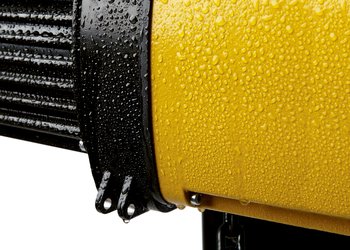
What does IP protection class mean?
The degree of protection designation is always shown by the letter pair IP appended by two digits. These indicate the degree of protection of a casing with regard to contact and foreign bodies (first digit) and moisture or water (second digit). You will find more details here: https://en.wikipedia.org/wiki/IP_Code. Due to the design of the GP chain hoists to IP65 protection, they are protected against dust and water jets as standard and are therefore ideally suited for outdoor use, even under the most difficult conditions.
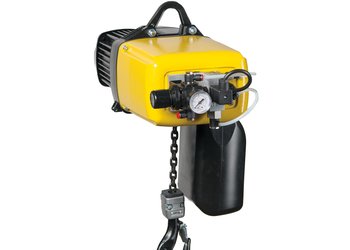
What does ATEX mean?
ATEX is a widely used synonym for the ATEX directives of the European Union. The term ATEX is derived from the French abbreviation for "ATmosphère EXplosibles". The directive currently includes two directives in the field of explosion protection, namely the ATEX product directive 2014/34 / EU and the ATEX operation directive 1999/92 / EC. Explosive atmospheres can arise in many branches of industry, for example in the extraction of raw materials, in the chemical or petrochemical industry, in food production or also in energy supply. Electrical lifting equipment used in an explosive environment must be designed so that it does not become a source of ignition. GIS electric chain hoists provide protection against dust or gas and have barometric pressure and temperature monitoring in the casing. System errors lead to immediate interruption of operation (in case of gas intrusion or a pressure drop). Available for the zones 22 (D) and 2 (G).
Chain hoists + trolleys
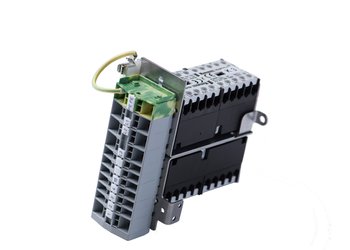
What is a contactor control?
GIS electric chain hoists are fitted with a 42 V contactor control as standard. In the control switch, which controls the operating current (high voltage), only low voltage current flow to protect the operator.
Contactor-controlled units do not contain any sensitive electronics, which minimises the risk of operational failures. GIS electric chain hoists are therefore suitable for workplaces with long operating times and high switching frequency.
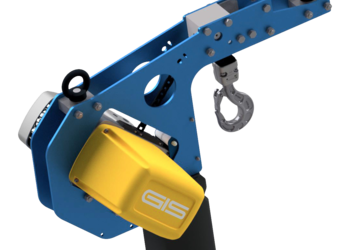
What is a low-headroom version?
The GPK electric chain hoist is the solution for particularly low rooms and tight spaces. A special chain deflection ensures a maximum lifting height with optimum utilisation of the room height. This chain hoist can be integrated into a GISKB crane system or an overhead travelling crane for a maximum lifting height for loads up to 2000 kg. An extended version is optionally available for the transport of long bulky goods.
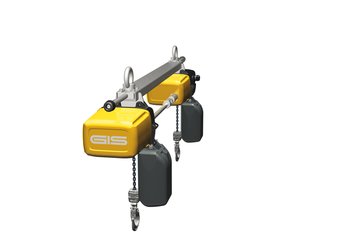
What is a synchronised hoist?
The synchronised chain hoist is suitable for transporting long and bulky loads up to 2 x 2500 kg. 2 electric chain hoists are connected electrically and mechanically and ensure that the 2 load strands run in parallel without the goods being distorted during the lifting process. The distance between the load hooks is freely selectable. Optionally, a synchronous chain hoist can be equipped with a customised device for load suspension.
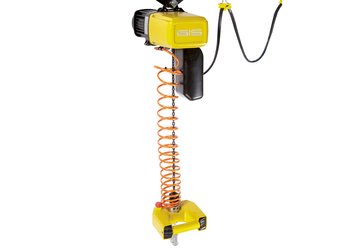
What is a Handy chain model?
The GIS electric chain hoist for quick and effortless positioning of loads. The control unit is used to operate the chain hoist and simultaneously to guide the load with one hand.
This model is particularly suitable for workplaces with many repetitive lifting operations and can easily be combined with a slewing crane or a suspended crane for area-wide goods handling.
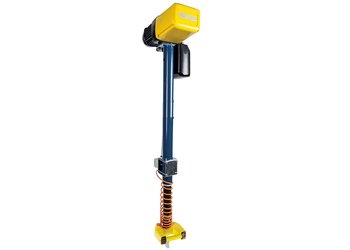
What is a Handy telescope model?
The GIS electric chain hoist for quick and exact positioning of loads. The control unit is used to operate the chain hoist and simultaneously to guide the load with one hand. In the Handy telescope model, an additional guide tube stabilises the lifting movement and thus guarantees extremely precise positioning of the goods to be transported. This hoist is also frequently used for moving eccentric loads.
This electric chain hoist is particularly suitable for workplaces with many repetitive lifting operations and can easily be combined with an articulated slewing crane.

Are electric chain hoists from GIS suitable for outdoors use?
The GP / GPM series feature as standard protection class IP 65 (dust-tight and protected against water jets), which allows outdoor use without any problems. The permissible range for outdoor applications is ambient temperatures from -15 °C to +50 °C. Options are available to protect the chain hoist from higher or lower temperatures.
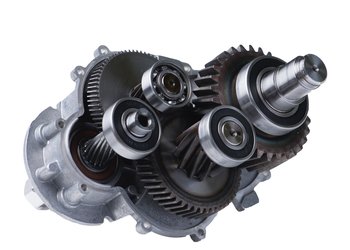
Can you recommend an electric chain hoist that is very quiet?
Thanks to its 3-stage gear with helical teeth, the GIS electric chain hoist GPM250 from the new GP series is very quiet with 65 db (measuring distance 1 m) compared to other commercially available chain hoists.
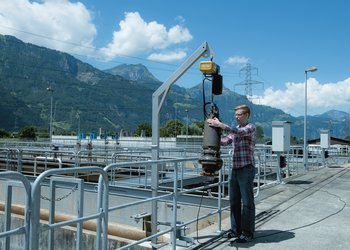
What capacities are single-phase electric chain hoists suitable for?
GIS single-phase electric chain hoists can be used for a lifting capacity of 2000 kg. This single-phase alternating current version can be conveniently operated with electricity from the socket, both stationary and in conjunction with a manual or motorised trolley. The chain hoist is suitable for repetitive handling at the workplace as well as for mobile use indoors or outdoors.
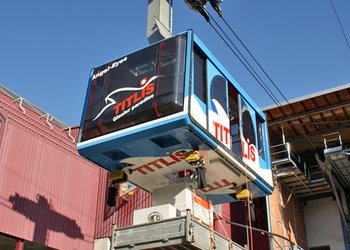
What is the temperature range for the use of electric chain hoists?
GIS electric chain hoists in the standard version are suitable for the temperature range - 15° to + 50°. For ambient temperatures below the minimum and above the maximum special versions are used.
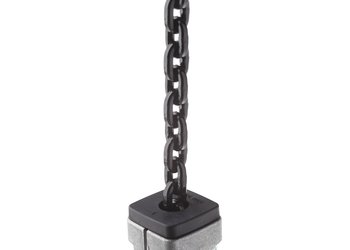
What are the advantages of profile-steel chains?
In comparison with traditional round-steel chains, profile-steel chains as used with the electric chain hoist GPM and GP have a significantly higher safety factor which reduces the wear out and extends the service life.
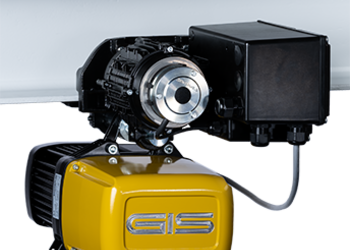
Are trolleys equipped with a fall protection?
All GIS manual and electric trolleys are equipped with an integrated fall and climbing protection made of solid cast steel, as well as an intervention protection.
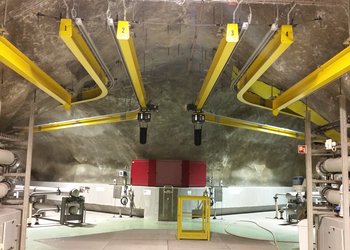
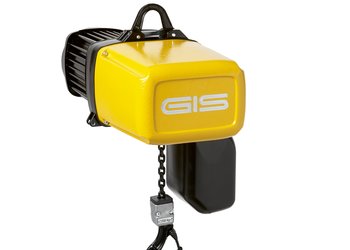
Tips & tricks: Lubrication of the chain
Regular lubrication of the chain can extend the service life by the factor 20 - 50. According to our operating instructions, we recommend a creeping gear oil of type 15W-40, paying particular attention to the viscosity. The chain manufacturer recommends a viscosity of less than ISO 300. Unsuitable chain oil can lead to the chain clumping in the chain bag and the chain links no longer running properly through the chain guidance. Before start-up and regularly during use, the chain must be oiled along its entire length as well as between the chain links.
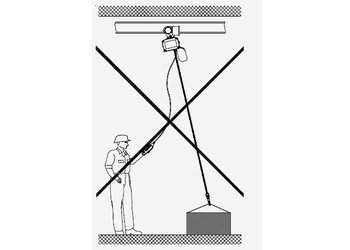
Tips & tricks: Preventing diagonal pull
The diagonal pull of loads (> 4°) should be avoided, since the chain and the chain guide are excessively worn out in this way, which can affect the safety of the system.
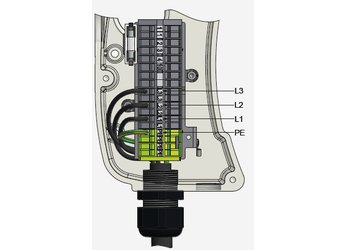
Tips & tricks: Wrong running direction of the chain hoist
You press the "up" button on the control switch, but the electric chain hoist lowers the load or vice versa. This is most likely because the hoist is incorrectly connected electrically to the mains and needs to be connected correctly by an authorised professional.
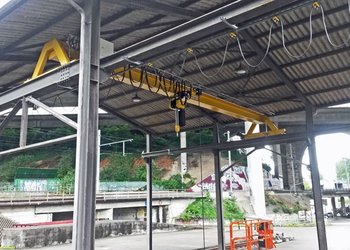
Tips & tricks: Outdoor operation
As a standard, our electric chain hoists GPM and GP are suitable for outdoor operation due to protection class IP65. The permissible range for outdoor applications is ambient temperatures from -15 °C to +50 °C. In addition, it is recommended to install a protective cover above the electric chain hoist to protect it against weather influences.
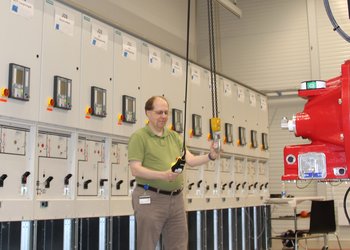
Tips & tricks: Protecting the control cable
Never pull the control cable to move the electric chain hoist, even when a strain-relief cable is installed. The control cable could be damaged or pulled out. Dislocation of the chain hoist must be carried out with a load hook.
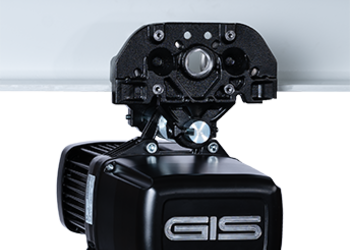
Tips & tricks: Trolley with plastic rollers
Should the standard steel rollers be too loud or should they transmit noise into the building, we recommend plastic rollers (up to maximum 1 250 kg). For more soundproofing solutions please contact our sales team.
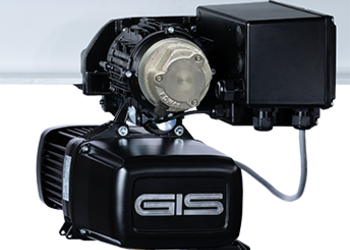
Tips & tricks: Trolley with stainless rollers
In case of aggressive acids or alkalis in your working environment, we recommend a corrosion-resistant electric chain hoist and a trolley with corrosion-resistant rollers.

Buyer's guide: Doing everything right when buying an electric chain hoist
When purchasing a new electric chain hoist, there are a few points to consider in order to find the right hoist for your application. Our guide is intended to support you in your purchase decision.
Crane systems
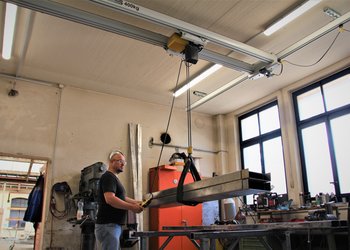
What is a low headroom bridge?
This design is used for deep rooms and tight spaces. To optimise, i.e. reduce the overall height, the cross beam (crane bridge) is raised between the crane runways. In this way, the available room height can be optimally utilised.
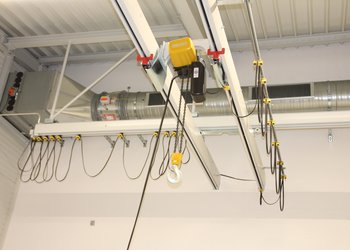
What is a saddle?
For height optimisation of GISKB crane systems and travelling cranes with double crane bridge, we use a saddle. In this construction, the electric chain hoist is mounted on a saddle between the 2 crossbeams of the crane bridge.
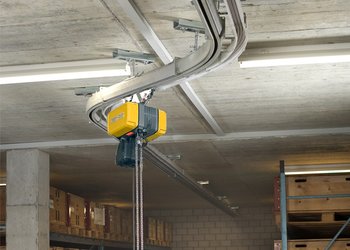
What is a bend?
GISKB overhead monorails are used to move goods from one work station to the next. 30° or 45° bends are available for flexible routing in which different stations can be approached with pinpoint accuracy in a work sequence and thus connected with each other.
In addition to curves, turnstiles can also be used for 90° changes of direction in confined spaces or sliding turnouts for combining several lines.
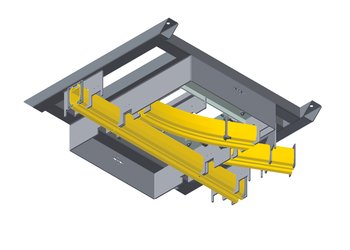
What is a slide switch?
In the product range of the GISKB crane system there are sliding switches for the connection of two or more lines of an overhead monorail available. Their function is comparable to that of a switch in train traffic. By moving the switch, the moving hoist is directed either to line 1 or line 2. The switch can be operated either manually or electrically.
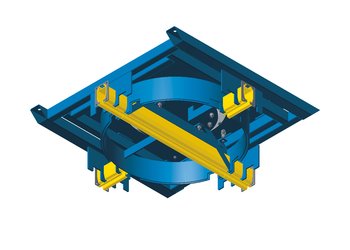
What is a turntable?
In overhead monorails for linear goods transport, the turntable enables a 90° change of direction in a very confined space. The hoist is moved from an overhead track into the turnstile and can continue its journey after the turn on the desired outgoing crane track. The turnstile is rotated mechanically or pneumatically.
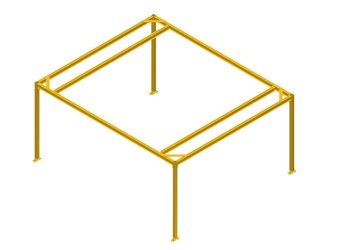
What is a freestanding system?
For very high or insufficiently loadable ceiling constructions, a free-standing system is recommended.
Assembly is carried out by fixing support beams to the floor. Crane runways and crane girders can be easily mounted to the longitudinal or transverse beams of the supporting structure.
Subsequent relocation of a free-standing crane system to a new location is possible without any problems.
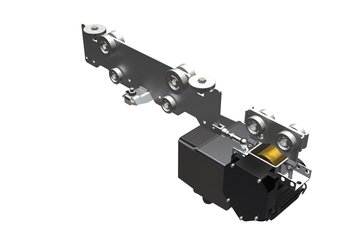
What is an electric tug?
In GISKB crane systems with electric crane and/or trolley travel, the electric tug provides the motion. Its function is comparable to the locomotive of a train.
The electric tug is either attached to the trolley of the chain hoist for trolley travel or to the rolling apparatus of the crane bridge for crane travel.
The electric tug has a control with frequency inverter. Therefore, 2 travel speeds can be infinitely adjusted for smooth starting and swing-free positioning of the load.
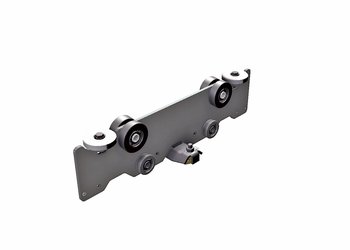
What is a rolling apparatus?
Rolling apparatues are an important part of the GISKB small crane system. In suspended cranes, they connect the crane girder (crane bridge) to the crane runway and ensure that it can be moved horizontally. If the crane bridge is not to be moved manually but electrically, the rolling apparatus can be supplemented with an electric tug.
There are different versions of the rolling apparatus for single crane girders and double crane girders.
The trolleys are equipped with plastic rollers for optimum smoothness when moving manually and for quiet running. Steel rollers are used for heavy loads.
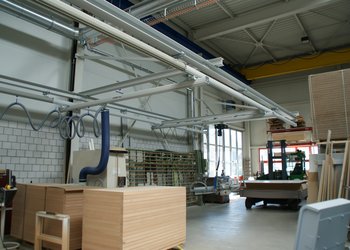
Which hollow profiles are better - steel or aluminium?
Crane systems with hollow steel are less expensive to run smoothly thanks to plastic rollers and are also suitable for larger span widths of the crane bridge. Aluminium hollow profiles are used for lighter loads up to 630 kg. They offer excellent smooth running characteristics improved handling at higher ergonomics and thus shorter cycle times.
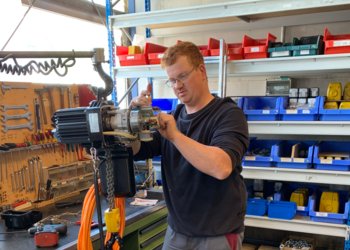
Do crane systems have to be checked on a regular basis, and if so by whom?
Cranes and hoists are safety-relevant equipment whose perfect technical condition is a basic prerequisite for accident-free operation. As the operator of crane systems and other lifting equipment, you are obliged (according to BetrSichV or DGUV) to have them inspected by an expert as required, but at least once a year, depending on the conditions of use and the operational conditions. The manufacturer's inspection instructions in the operating manuals must be observed.

Neither the ceiling nor the existing upper construction are able to carry the load of a crane system. Are there alternatives to the installation of a crane system?
By means of free standing steel columns, a crane system can be built from the bottom (free standing system). This also has the advantage that the system can be easily dismantled and reassembled at another location when the workstations are rearranged.
Depending on the area, which a crane has to cover, a slewing wall crane or a slewing pillar cranes is an economic alternative.
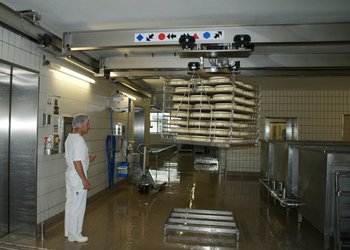
Do you also have crane solutions for the food industry?
For the food industry, the chemical industry or for waste water treatment plants, where special demands are placed on corrosion resistance, profiles can be used in a hot-dip galvanized version. All screws and components are as standard galvanized. The hoists can be supplied in a corrosion-resistant version For hygienic reasons, only lubricants that are compatible with foodstuffs are used for the gearbox and the load chain.
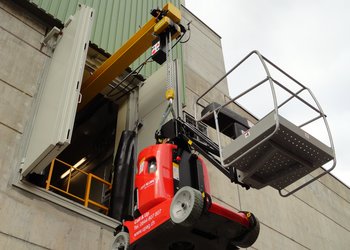
Is it possible to lift loads outside of the suspension points of the crane system?
To cover hard-to-reach working areas, GISKB crane systems and travelling cranes can be designed as special telescopic or overhung systems. With a telescopic crane girder, an arm can be extended so that a greater reach is available if required.
This allows the user to move loads outside the crane runway, ensuring efficient hall use. This is helpful if there is no suspension possibility for the crane system (e.g. if goods have to be brought into the building from outside with the crane system), if obstacles (ventilation ducts, radiant heaters or media lines) prevent the use with crane runway, or if there are niches in the floor plan of the production hall which the crane should also serve.
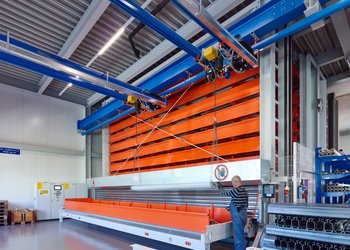
Tips & tricks: Electric relocation of loads
The manual relocation of loads in steel beams, particularly in case of repetitive goods handling, can be very tedious. In such cases we recommend the installation of an electric tug. It enables continuous electric moving and can also be retrofitted in existing crane systems. This can also reduce inconvenient swinging of the load
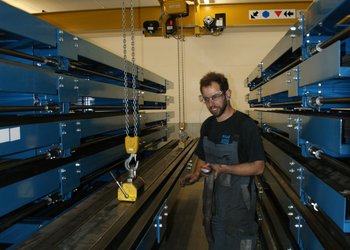
Tips & tricks: Sagging control switch interferes with load
Instead of a control switch use a radio control or an ideal control system in order to operate the crane system from a safe distance.
Vacuum handling systems
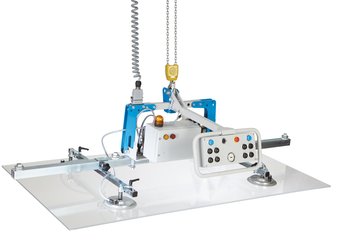
What is a high-pressure - vacuum device?
In the high-pressure - vacuum device (Type GH) a high vacuum of about 80-90% is created in a deep volume flow. It is exclusively suitable for air-impermeable goods such as glass, metal, plastic or stone.
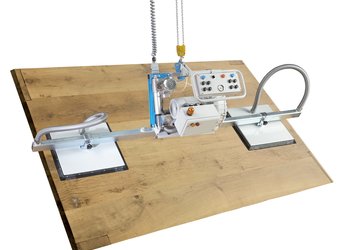
What is a low-pressure - vacuum device?
In the low-pressure - vacuum device (Type GN) a high vacuum of about 30-90% is created in a deep volume flow. It is suitable both for airtight goods as well as for light air-permeable porous goods or goods such as wood panels or beams, concrete slabs or cardboard.
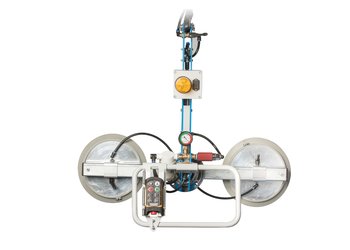
What is an ejector - vacuum device?
The ejector vacuum device (type GHGE) is a high-pressure vacuum device and works according to the Venturi principle, in which a vacuum is generated with compressed air. In contrast to conventional vacuum lifters, it does not require a power supply for operation, but compressed air.
As a result, it is also significantly cheaper to purchase, but somewhat more cost-intensive in terms of operating costs.
The ejector vacuum device is suitable for the vertical transport of glass and other air-impermeable goods.

What is a turning device?
GIS turning devices are vacuum handling systems with which plates or doors can be turned infinitely by 180°. The goods are either sucked from the stack or directly from a conveyor system and brought directly into the right position for the next work step with the turning function. Thus, this vacuum lifter is an important helper in the production process.
The vacuum lifters GH and GN can be equipped for use as turning devices.
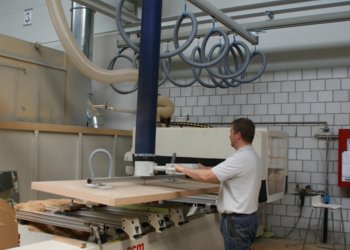
What is a vacuum-handling device?
The Vacuhandling is a vacuum tube lifter which is used for repetitive, fast and stepless handling of small loads such as cartons, sacks, barrels, containers etc. up to approx. 300 kg. The vacuum in the tube provides the suction and holding of the goods, as well as the lifting movement.
The tube lifter can be ideally combined with a GISKB crane system or a slewing crane so that the products can be easily moved from one workstation to the next.
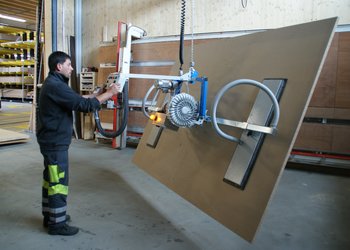
Can easily permeable goods such as wooden panels be transported using vacuum?
With the vacuum hoists GN with side channel seal which generates a high volume flow, also slightly air-permeable or porous loads can be transported.

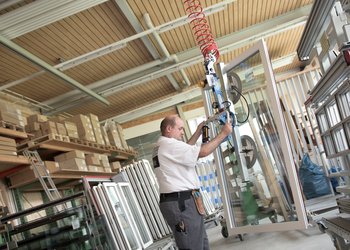
Does GIS have a cost-efficient solution for the vertical transportation of glass panels?
Assuming that a compressed air supply is present, the device GHGE is a cost effective solution for the vertical transport of air-impermeable materials such as glass, metal and plastic.
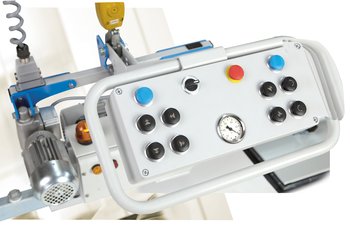
What are the advantages of vacuum-lifting systems from GIS in comparison with competing products?
By our customers with the central control unit it is especially appreciated that the vacuum generation as well as all hoists and movements can be controlled. This simplifies operation, as it is not necessary to work with two independent control units.
As a manufacturer of electric chain hoists and crane systems, we are able to offer a complete solution tailored to the workplace and the operating premises.
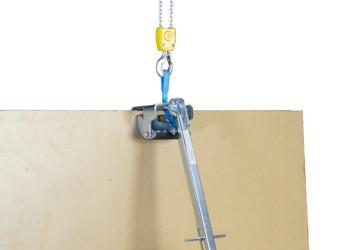
Is there an alternative to vacuum-lifting devices when it comes to lifting heavy and unhandy wooden panels?
For the vertical transport of panels of all kinds up to a load capacity of 250 kg (gripper opening 0 - 60 mm), the use of a gripper plate in combination with a GIS electric chain hoist is an inexpensive alternative. The panel gripper is particularly suitable for limited ceiling height.
Systems + components
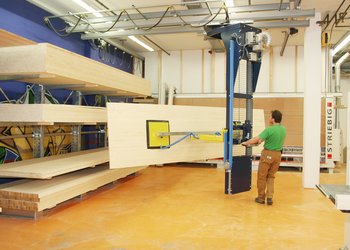
What is a shelf storage operation unit?
GIS shelf storage operation units with vacuum unit or lifting device are used for the efficient storage and retrieval of panels and other goods in and out of shelves.
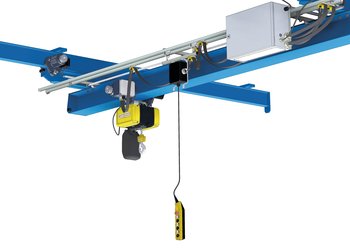
What is an roving pendent and when is it used?
In crane systems with roving pendents, the control switch is operated in a C-rail parallel to the crane track and can be moved independently of the load. It is used mainly in big and bulky loads where the crane operator wants to move independent of the load.
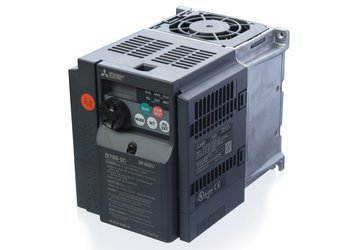
What is a frequency inverter?
A frequency inverter changes the mains frequency to a voltage with a different frequency. This enables a soft start for travelling or lifting movements. Frequency converters are available for electric chain hoists, trolley drives and crane controls.
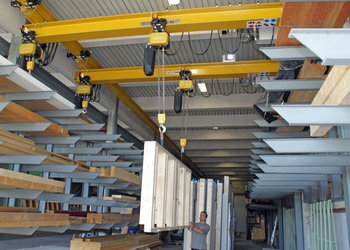
When is the use of a frequency inverter recommended?
The frequency inverter is particularly suitable for oscillating free transportation and for precise positioning of loads. Through the soft start the whole crane system is also protected, which increases the service life of all components subject to significant wear.
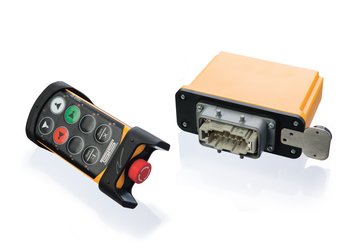
What is a radio remote control?
With a radio remote control, lifting and travel movements can be conveniently controlled from a distance. This gives the operator more freedom of movement than with a wired control and allows him to maintain a safe distance from the load at all times.
Suitable radio controls are available for electric chain hoists and complete crane systems.
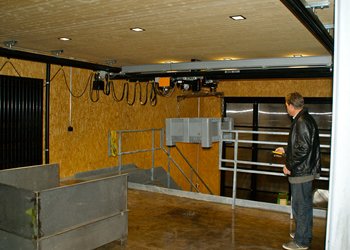
When is the use of a remote control recommended?
For large and bulky goods or when transporting the load in poorly or not accessible workspaces, we recommend using a remote control. This can conveniently control up to six travelling and lifting movements from a safe distance.
A radio control can be an elegant solution for tandem operation. Several cranes are controlled from one hand-held transmitter and synchronous lifting and travelling movements can be carried out if required.


